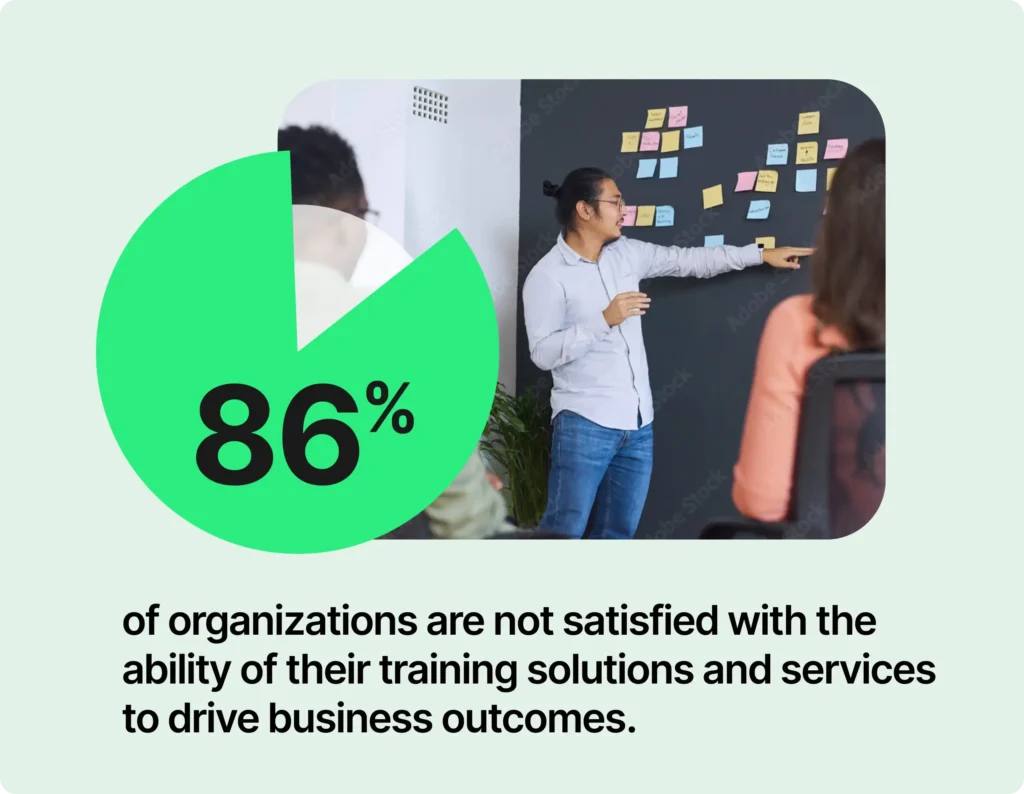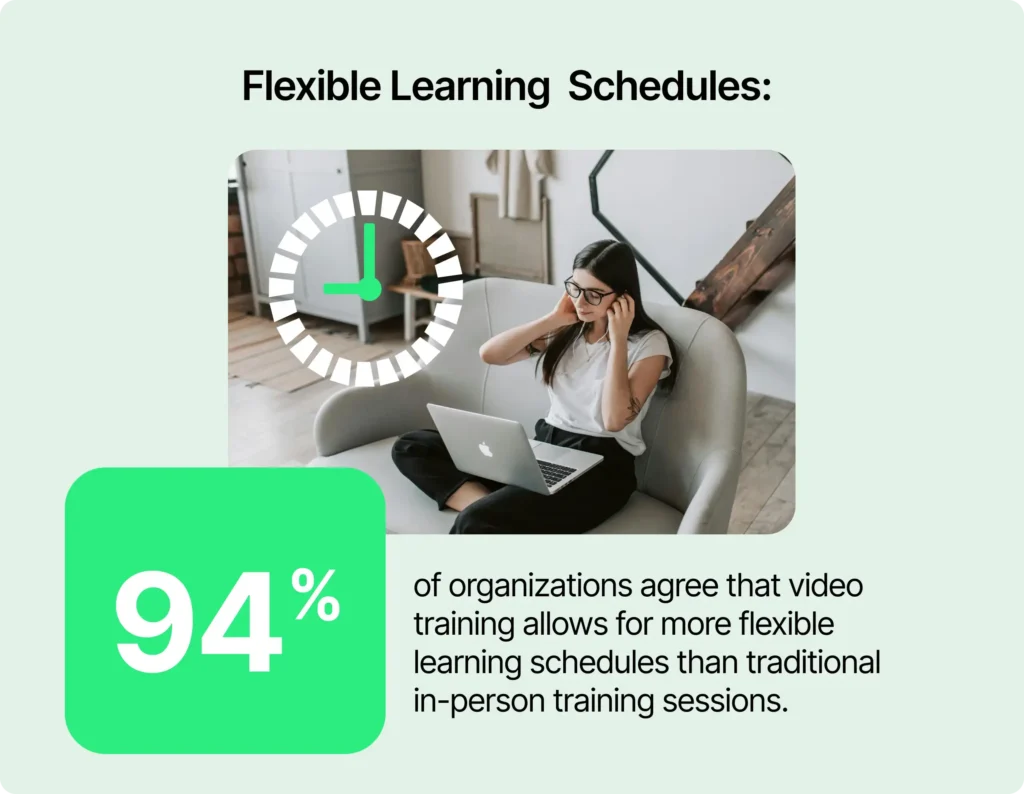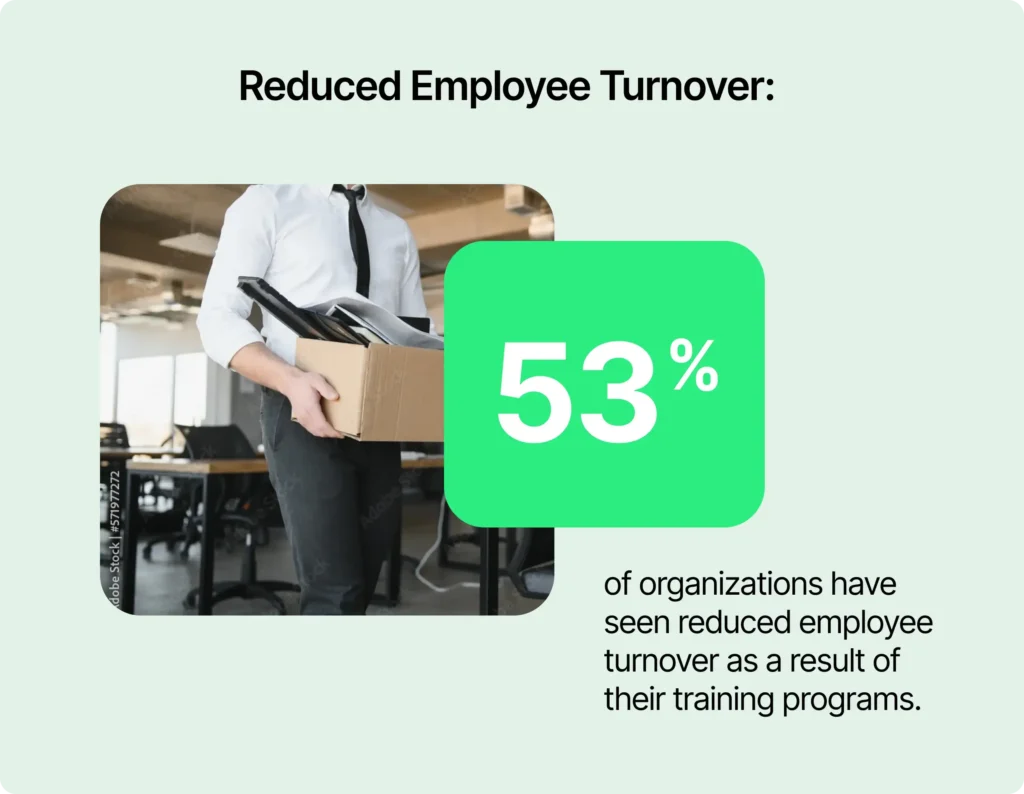Descubra el potencial de su organización: por qué el vídeo debería ser la piedra angular de su estrategia de formación
- Formación
Descubra el potencial de su organización: por qué el vídeo debería ser la piedra angular de su estrategia de formación

La capacitación y la mejora de las habilidades de la fuerza laboral siempre han sido una piedra angular del éxito organizacional, pero el dinámico panorama empresarial actual presenta nuevas complejidades. Los métodos de formación obsoletos y los recursos dispersos pueden obstaculizar el progreso, lo que hace que la transferencia eficaz de conocimientos sea más crítica que nunca. Como un elemento básico de confianza en el aprendizaje y el desarrollo, la capacitación basada en video continúa brindando a las organizaciones una forma confiable e impactante de involucrar a los empleados y brindar una educación consistente y escalable.
Un informe reciente de Panopto, líder en plataformas de aprendizaje por vídeo, arroja luz sobre el papel del vídeo en el aprendizaje organizacional. Los resultados, basados en información de empresas globales, constituyen un sólido argumento sobre por qué el vídeo debería estar en el centro de la estrategia de aprendizaje de su organización. Esto es lo que necesitas saber:
Los desafíos de la formación tradicional
El aprendizaje consiste fundamentalmente en compartir conocimientos. Cuando ese conocimiento está vinculado a los procesos, protocolos y estándares únicos de una organización, los empleados se convierten en la principal fuente de experiencia. Esto crea una serie de desafíos: ¿Cómo se puede capturar este conocimiento de manera efectiva? ¿Cómo se puede validar? ¿Dónde se debe almacenar? Estas son solo algunas de las preguntas críticas que organizaciones como la empresa de energía nuclear Framatome deben abordar al abordar la compleja tarea de preservar el conocimiento institucional.
Luego, a pesar de las importantes inversiones en el desarrollo de los empleados, el 86% de las organizaciones siguen insatisfechas con sus programas de formación. ¿Por qué?
- Herramientas dispersas: los empleados a menudo hacen malabarismos con múltiples plataformas, lo que dificulta encontrar información relevante rápidamente.
- Contenido obsoleto: Más de la mitad de las organizaciones luchan por mantener los materiales de capacitación actualizados y atractivos, lo que reduce la retención y la productividad.
- Pérdida de productividad: Los trabajadores pasan hasta seis horas a la semana buscando información, perdiendo un tiempo valioso.
Los enfoques tradicionales no están a la altura de las necesidades de los estudiantes de hoy en día, pero la formación basada en vídeo ofrece una solución.

¿Por qué funciona la capacitación basada en videos?
El video es el medio idóneo para capturar, sistematizar y compartir el conocimiento institucional. Su versatilidad brilla en diversas aplicaciones, desde demostrar habilidades prácticas altamente técnicas, como operar equipos pesados de manera segura, hasta enseñar habilidades interpersonales matizadas, como dominar el arte de la negociación. Es por eso que organizaciones como el fabricante Ingersoll Rand colocan el video en el centro de sus estrategias de aprendizaje, desarrollo y comunicación.
Y los datos hablan por sí solos: las organizaciones que utilizan el vídeo informan de resultados significativamente mejores en todos los ámbitos. He aquí por qué:
- Alineación con las preferencias de aprendizaje modernas
El auge del microaprendizaje (lecciones cortas y específicas) se adapta perfectamente a los formatos de video. Los empleados prefieren contenido del tamaño de un bocado que sea fácil de digerir, y el video ofrece exactamente eso. - Flexibilidad y accesibilidad
El vídeo permite el aprendizaje bajo demanda, lo que permite a los empleados acceder a la formación en cualquier momento y lugar. De hecho, el 94% de las organizaciones están de acuerdo en que el vídeo fomenta horarios de aprendizaje flexibles, lo que lo hace ideal para equipos distribuidos y remotos. - Compromiso y retención mejorados
El contenido de video es inherentemente más atractivo que la capacitación basada en texto o en persona. Los empleados pueden revisar los materiales según sea necesario, lo que mejora la retención y garantiza que las habilidades se mantengan. - Eficiencia y ahorro de costos
El vídeo elimina obstáculos logísticos como la programación y los viajes, ahorrando tiempo y dinero. Más del 77% de las organizaciones informan que el ahorro en costos que supone el vídeo justifica la inversión inicial.

Capacitación en video en acción
Las organizaciones que aprovechan la capacitación basada en video están viendo beneficios tangibles:
- Rendimiento de los empleados: el video permite a los trabajadores encontrar la información correcta rápidamente, lo que aumenta la productividad.
- Reducción de la rotación: Las empresas que utilizan el vídeo para la formación informan de una reducción del 53% en la rotación de empleados.
- Mejora de la eficiencia operativa: Con las herramientas adecuadas, los empleados pasan menos tiempo buscando información y más tiempo contribuyendo.
Desde la incorporación y el cumplimiento hasta el desarrollo del liderazgo y la capacitación técnica, el video está transformando la forma en que las empresas preparan a sus equipos para el éxito.
Creación de una estrategia de formación centrada en el vídeo
Para aprovechar todo el potencial de la formación en vídeo, las organizaciones deben adoptar un enfoque estratégico:
- Centraliza tu contenido: Asegúrese de que los materiales de capacitación se almacenen en una biblioteca de fácil búsqueda.
- Invierta en contenido de calidad: los vídeos atractivos y actualizados generan mejores resultados y mayor satisfacción.
- Adopte herramientas impulsadas por IA: Las funciones avanzadas, como la búsqueda y el análisis de IA, hacen que la formación sea aún más eficaz.
- Adopte plataformas compatibles con dispositivos móviles: conozca a su fuerza laboral donde sea que esté con opciones de aprendizaje que priorizan los dispositivos móviles.
[Learn More: How to Use an AI Training Video Generator]

El futuro es el vídeo
La fuerza laboral moderna exige soluciones que sean dinámicas, flexibles y fáciles de usar. La capacitación en video no solo satisface estas demandas, sino que distingue a las organizaciones en un panorama cada vez más competitivo. Al invertir en vídeo, puede impulsar el compromiso de los empleados, mejorar la retención y alcanzar sus objetivos empresariales.
El informe de capacitación de la fuerza laboral de Panopto lo deja claro: el video no es solo una herramienta, es un imperativo estratégico. ¿Listo para ver el impacto que puede tener en su organización? Póngase en contacto con nosotros hoy mismo para saber cómo la plataforma de vídeo de última generación de Panopto puede revolucionar sus programas de formación.
Últimas noticias
-

- Formación
Employee Training Management – Aligning Employees with Corporate Goals
Effective employee training management is the backbone of thriving businesses, transforming scattered training efforts into strategically aligned growth engines. When employees understand exactly how their roles contribute to overarching corporate objectives, magic happens: productivity spikes, engagement soars, and long-term success becomes inevitable. Did you know that organizations that have made a strategic investment in employee…
Employee Training Management – Aligning Employees with Corporate Goals
-

- Ventas
How to Make Sales Presentation Videos With AI
A sales presentation can make or break a deal—yet too many sales teams still rely on outdated slides and monotonous pitches. Video content accounts for over 82% of consumer internet traffic. We live in a digital-first world where video is the key to capturing attention and driving engagement. But creating a polished, persuasive sales video…
How to Make Sales Presentation Videos With AI
-

- Aprendizaje activo
Why Every Business Needs an Upskilling Strategy (And How to Build One)
A strong upskilling strategy is no longer optional. It’s essential for keeping pace with rapid technological advancements and shifting market demands. As AI and automation reshape industries, companies must ensure their employees continuously develop new skills to stay competitive. But upskilling alone isn’t enough. Reskilling is equally critical for preparing workers to transition into entirely…
Why Every Business Needs an Upskilling Strategy (And How to Build One)



